Pipe shears: how to choose a quality tool
In modern construction, the most popular material for the installation of plumbing, sewage and heating systems is plastic. And if for the manufacture of most of these systems does not require the use of additional equipment, then properly perform the fitting of various parts to the desired size is possible only with the help of special tools, which are pipe scissors.
Let us dwell on it in more detail.
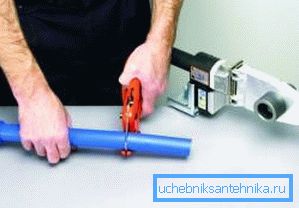
Tool selection depending on pipe diameter
The more people use plastic for arranging plumbing and drainage networks, the more popular are scissors for cutting polypropylene pipes.
After all, most often plumbing systems of this type of plastic are sold in large coils that are convenient for installing underfloor heating. You can purchase even lengths of up to 12 meters.
In any case, sooner or later you will need to cut a piece of the workpiece. And here a specialized tool will help a lot.
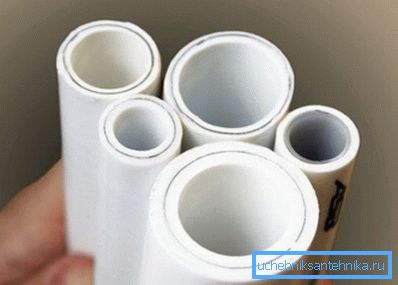
There are four categories of pipes, each of which has its own scissors or cutter:
- PN Used for installation of cold water supply systems and arrangement of underfloor heating, where the temperature of the heat carrier does not exceed 45 degrees Celsius. They withstand pressure up to 1 MPa.
- PN are well suited for the manufacture of cold water supply system of high pressure and heating systems in which the coolant circulates under pressure not exceeding 1.6 MPa.
- PN A universal material used to supply both cold and hot water, the temperature of which, however, must be less than 80 degrees Celsius.. The pressure in the system can not exceed 2 MPa.
- PN These pipes are reinforced with a layer of aluminum foil, so they can withstand fluid temperatures up to 95 degrees Celsius and pressures up to 2.5 MPa. Ideal material for arrangement of hot water systems and central heating.
In addition to pipes, you will need various fittings and fittings. They can be made of polypropylene, and also contain additional pressed metal elements, which are necessary for joining plastic with metal parts.
When choosing a fitting, the technical characteristics of all elements, including valves, should be taken into account. Otherwise, pipeline accidents cannot be avoided.
Features of cutting tools
Roller cutter
Before fixing the pipe on a wall or floor, as well as to mount individual parts of the pipeline into a single system, it is necessary to give the desired length to the blank.
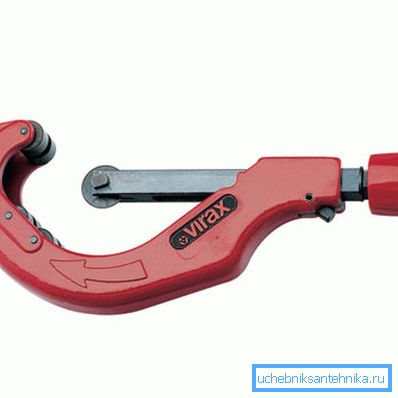
When using a roller pipe cutter, these features should be kept in mind:
- the tube should be rolled between the cutting part and other wider rollers;
- The cut thus obtained has an ideally flat surface with a chamfer, so that when installing the pipes in the socket the rubber sealing ring is not damaged;
- trimming with a roller pipe cutter takes a fairly long period of time.
Most often, this tool is used for facing sewer PVC pipes of large diameter.
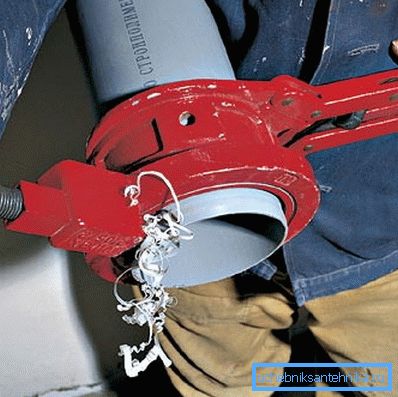
Cutting is performed in the following sequence:
- marked cutting place;
- the screw is unscrewed from the clamp, and the clip is brought to the place of cutting;
- gently rotating the screw, you must fasten the clamp (do not put too much effort, otherwise the workpiece may burst);
- after that, the tool must be rotated around the pipe to separate its parts from each other.
Scissors
Most often in work scissors are used to cut polypropylene pipes.
The process of working with them also has its own nuances:
- the blade of the tool is often equipped with a special rack with teeth, thanks to which it is not necessary to exert much effort to perform operations;
- scissors for plastic pipes can be held with one hand, while the other remains free to perform other operations;
- doing the installation of the plumbing with your own hands, and not having sufficient experience and skills, you can quickly get tired, cutting off a large number of blanks (electric scissors for metal-plastic pipes are deprived of this disadvantage);
- it is better to opt for the tools of well-known and well-established companies - low-quality Chinese scissors for PP-pipes will break after a few hours of work.

Tip! If you have damaged a plastic pipe during the trimming, you should remove the damaged area, as it will not allow you to tightly attach the fitting or molded part. By the way, using scissors for polypropylene pipes, you can repair the water supply network. To do this, cut the damaged area and replace it with a whole length of pipe.
The cutting process is as follows:
- A mark is marked on the surface of the pipe with a marker, marking the place of cutting.
- Above the mark is the blade base. To precisely position the tool, you can use a special slot.
- Then, acting on the handle, you should carefully cut into the pipe and continue facing, putting great effort.
- During the work does not need to make sharp movements with a brush. From this, the cutting element can come off the guide rail and the whole process will have to start from scratch.
- The blade should be located exactly along the surface of the part and as close as possible to it.
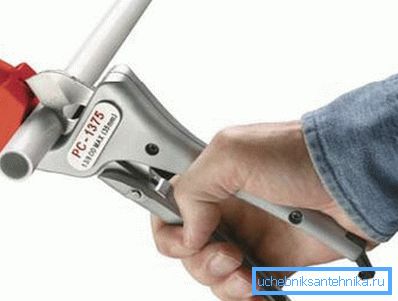
Electric cutter
Consider this device in more detail:
- Externally, the tool is a conventional scissors for cutting plastic pipes, equipped with an electric motor and battery;
- its use makes it possible to easily cut a large number of plastic blanks - it usually takes from 5 to 7 seconds per face to be cut;
- automatic scissors for cutting plastic pipes can be used only in the case when the diameter of the parts does not exceed 42 mm;
- When working with power tools, safety instructions must be strictly followed, which allows to avoid accidents at work.
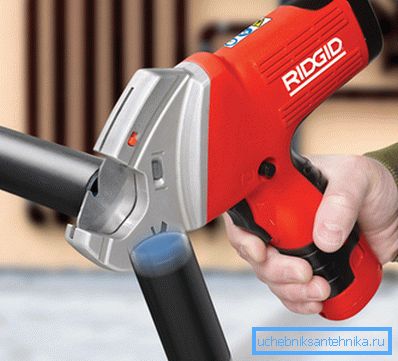
If the high price does not stop you, an automatic pipe cutter would be the best choice for a home craftsman.
Tip! In the absence of a special tool, you can cut a plastic pipe with a hacksaw. In this case, it will be necessary to clean the end of the burr and remove a small chamfer with a file.
General rules for cutting plastic pipes
There are no specific rules that describe how to use scissors to cut plastic pipes.
All cutting tools are designed so that the pipe is placed there strictly perpendicular. As a result, trimming occurs at exactly the right angle. It is very important for welded, fitting and many other types of connections.
Also remember that in the process of mechanical action on the handles of the tool, the workpiece may shift, resulting in a change in the length of the workpiece.
When a large-sized cutter does not fit completely into the palm, its lower handle can be clamped in a metal vice or simply leaned against a horizontal flat surface. The same trick can be used in the event that a large-sized product is facing and there is not enough physical strength to compress the handles.

Conclusion
Remember that before choosing a specific tool you need to clarify what material will be used for the installation of engineering networks, as well as the amount of future work. If only a small repair is needed, hacksaws are enough, and when it is planned to build a country house, it is better not to spare money for a power tool.
You can learn more about this topic from the video in this article.